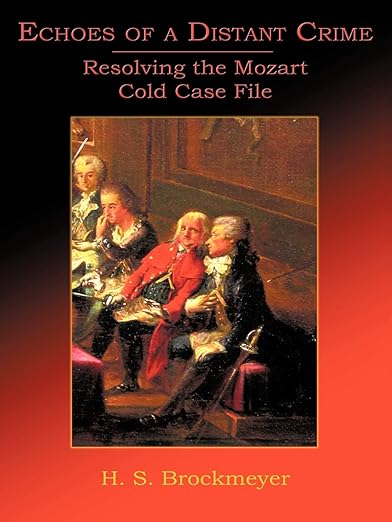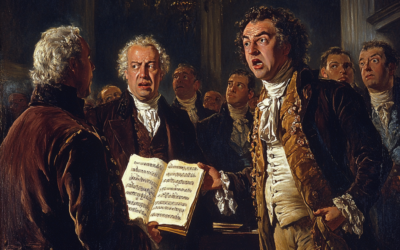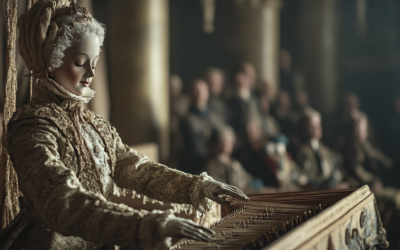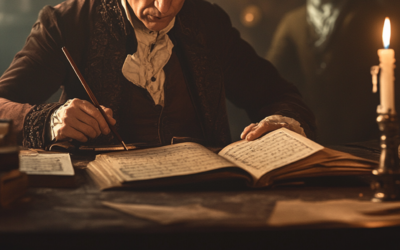The Mystery of Mozart’s Burial: Constanze vs. The Catholic Church
A Closer Look at the Secrets Behind Mozart’s Final Resting Place
For over two centuries, scholars have debated the circumstances surrounding Mozart’s burial. Constanze Mozart’s supposed inability to mark his grave, the confrontation with the Catholic Church over funeral masses, and the baffling disappearance of Mozart’s body all contribute to a mystery stranger than fiction. Did a powerful group keep her silent? And what really happened to Mozart’s remains?
"The real truth is stranger than all fiction."
H. S. Brockmeyer
This article is the continuation of an in-depth analysis by H. S. Brockmeyer. In Part I, the complex relationship between Constanze Mozart and her late husband was explored, challenging long-held assumptions about her supposed neglect. Brockmeyer examined her efforts to preserve Mozart’s legacy, including her treasured keepsakes, travels, and letters. The mystery surrounding Mozart’s burial was introduced, raising questions about his final resting place, the lack of a headstone, and the contradictions in historical records. In this second installment, Brockmeyer delves further into the bizarre circumstances of Mozart’s burial, his unexplained absence from St. Marx Cemetery, and the Catholic Church’s enigmatic refusal to grant funeral masses.
A Grave Without a Marker
One of the most persistent myths about Mozart’s burial is that Constanze Mozart was simply unable to erect a gravestone due to burial customs of the time. H. S. Brockmeyer dismantles this theory, demonstrating that Joseph II’s burial decrees never explicitly forbade headstones. Despite this, neither Constanze nor Mozart’s wealthy patrons, including Freemason Brothers and aristocratic acquaintances, ever ensured that a proper gravestone was placed at St. Marx Cemetery. Why?
The Strange Confrontation with the Catholic Church
In 1836, Constanze attempted to pay for masses for Mozart, her second husband Georg Nissen, and other family members. Despite prepaying, church officials refused the request. Their reasoning? Nissen was not Catholic. Yet this does not explain why masses were also denied for Mozart, Nannerl, and Sophie Haibl. Was Mozart’s Masonic affiliation a factor in the church’s refusal? The Catholic Church’s antagonism toward Freemasonry was well-documented, and its reluctance to honor Mozart in death raises serious questions.
The Last Sighting of Mozart’s Body
According to Brockmeyer, the last known location of Mozart’s body was not in a church or cemetery, but at Emanuel Schikaneder’s Freihaus Theater. A young woman claimed to have seen Mozart’s corpse there, a revelation kept secret for decades. If true, this suggests an alternative fate for his remains, contradicting the widely accepted account of his burial at St. Marx. If Mozart was indeed last seen at the Freihaus Theater, how did his body make its way to an unmarked grave?
A Masonic Funeral That Never Happened
As a Master Mason, Mozart was entitled to a proper Masonic funeral, with all expenses covered by his lodge. Yet no such funeral was arranged. Had Mozart not formally requested it, or was there an active effort to deny him this final rite? Brockmeyer highlights the silence of Mozart’s influential Freemason acquaintances, including Baron van Swieten and Michael Puchberg, who seemingly did nothing to ensure a dignified burial for their brother in the lodge.
Constanze’s Silence and the Mystery Unresolved
Even when confronted about her failure to mark Mozart’s grave, Constanze’s explanations were vague and contradictory. She claimed that no one could find the exact burial site, yet she made no effort to challenge this or seek alternative memorials. Brockmeyer suggests that she refused to place a gravestone because she knew Mozart was not buried at St. Marx at all. If true, this would mean the past two centuries of speculation were built on a false premise.
Final Thoughts
H. S. Brockmeyer’s research challenges the accepted narrative of Mozart’s burial, revealing inconsistencies and deliberate omissions. From the Catholic Church’s obstruction to the unexplained last sighting of Mozart’s body, the questions surrounding his fate remain unresolved. As Brockmeyer aptly puts it:
“The real truth is stranger than all fiction.”
You May Also Like
When the Myth Collapsed
Vienna exposed the myth: La Finta semplice was riddled with errors, and Wolfgang’s supposed opera genius was nothing more than Leopold’s fabrication. With their reputation in ruins, father and son turned to Italy, hoping to rewrite history.
The London Notebook and the Vienna Disaster
Far from the myth of a flawless young genius, Mozart’s London Notebook reveals musical struggles and guided exercises, while the Vienna opera disaster proved that his father played a far greater role in his compositions than legend would have us believe.
Versailles, Vanity, and the Pursuit of Prestige
Leopold Mozart’s letters transformed his son’s European tour into a carefully staged fantasy—filled with exaggerated encounters, fabricated royal admiration, and a relentless pursuit of social prestige. But how much of it was real?
The Fabricated Childhood of Mozart
The legend of young Mozart’s divine genius crumbles under scrutiny, revealing a childhood dictated by Leopold’s ambition, carefully constructed myths, and a relentless pursuit of fame at the expense of genuine artistic education.
The Man Behind the Myth
Leopold Mozart’s legacy has been shaped by myths and hagiographies, but his letters reveal a man more concerned with financial gain and self-promotion than artistic integrity. Was he truly a devoted father, or simply an opportunist?
Constanze Mozart’s Enduring Love
Although some have doubted her devotion, Constanze’s own words and actions illustrate a widow deeply committed to preserving Mozart’s legacy. Diaries, personal correspondence, and eyewitness testimony all challenge the notion that she neglected his memory—while the circumstances around his burial grow ever more perplexing.







